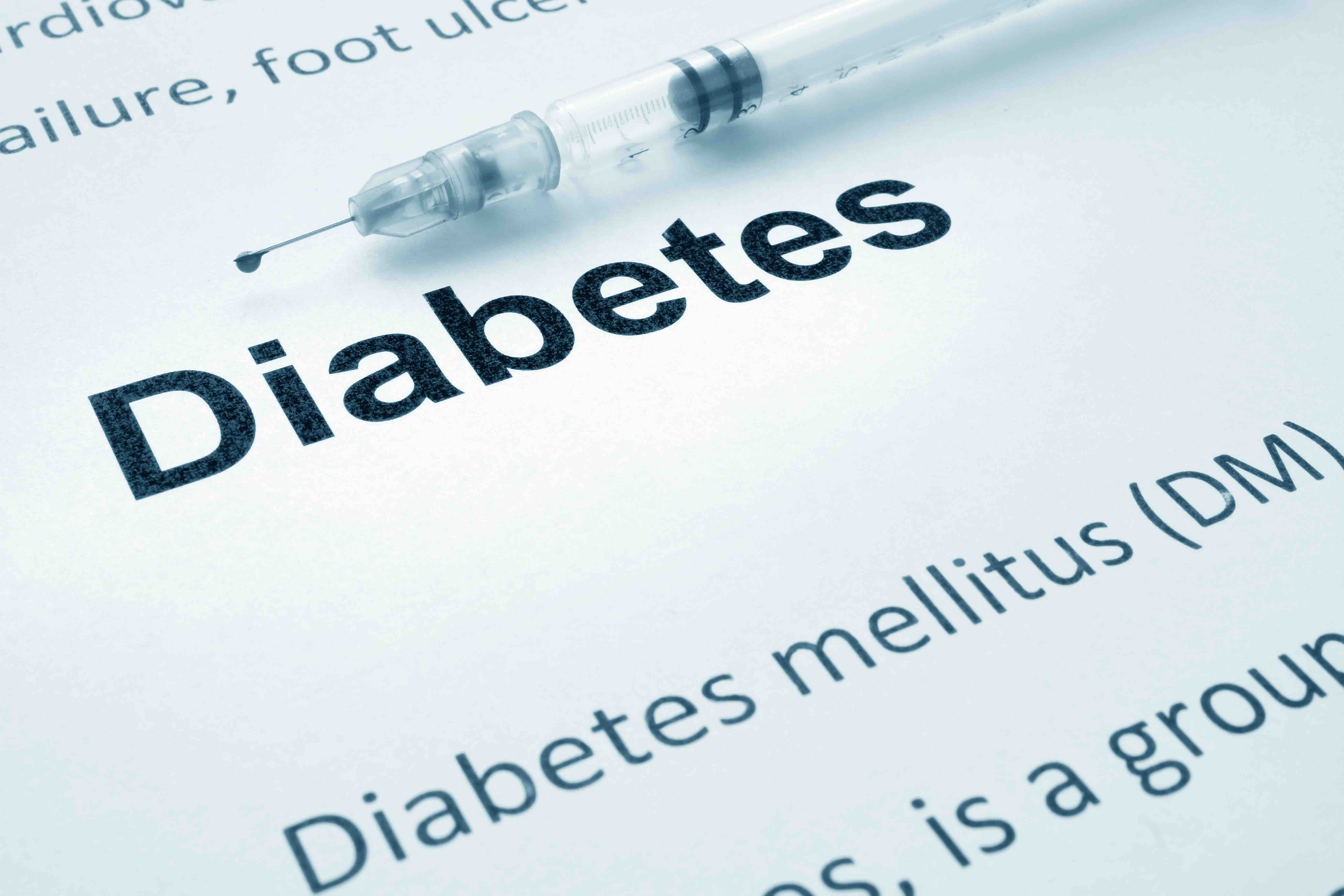Article
Workplace Wellness Can Be Hazardous to Your Health
Author(s):
The health hazards of workplace wellness programs fall within 6 categories.
Recently, the economics of wellness were summarized in this blog. It turns out there is a reason no one has claimed the $3 million reward for showing wellness saves money: it doesn’t.
Today is part 2 in the series, covering the health hazards of wellness. As with the previous article, it will largely link to other studies and claims made by the perpetrators themselves.
The hazards fall into 6 categories:
- Actual, well-documented, harms to an exposed population
- First-person case studies and reports
- Crash-dieting risks
- Flouting of established clinical guidelines
- “Hyperdiagnosis” leading to unneeded medical care
- Incorrect or potentially harmful advice that employees are told to take
Actual, Well-Documented Harms to an Exposed Population
There is only 1 data point demonstrating actual harm to a population exposed to wellness. That may be because a significant amount of data is required for such a demonstration. Further, the data must be incontrovertible. The vendor is Wellsteps, and the population is the Boise School District. It is incontrovertible because it is the vendor’s own data presented by the vendor itself. Hence, there is nothing to controvert—no one is challenging it.
It showed a substantial deterioration in health status of Boise’s teachers, measured both subjectively and objectively. It has already been summarized in The American Journal of Managed Care blog.
What is distressing about this outcome, as regards the wellness industry as a whole, is that is Wellsteps is not an outlier. Quite the opposite, Wellsteps won the wellness industry’s top award for quality in 2016, precisely for this work with Boise. If this program is the best, one can only imagine how much harm is does by vendors who are not the best—especially, those who are not willing to disclose their data. As the leading wellness promoter, Ron Goetzel, PhD, acknowledges, “many unsuccessful programs are not reported.” This figure includes “thousands,” he says, while only 100 (presumably including Wellsteps, since he runs the committee that bestowed the award upon them) are deemed by him to have succeeded.
First-Person Case Studies
I have worked with hundreds of patients over the 13 years during which I have worked with people with eating disorders. In the past 2 years, I have seen a number of patients who were quite negatively impacted by the wellness programs at their place of work.
Employees rarely put their names on first-person reports of wellness program harms, fearing retaliation from supervisors. However, the Bazelon Center collected quite a number of them, while maintaining confidentiality, from employees with eating disorders. Social worker Rhonda Lee Benner, who provided some of these case studies, wrote:
Here are summaries of detailed case studies:
- Jane, an executive with anorexia, begs not to be weighed … and then begs, unsuccessfully, not to have her weight announced. Relapses.
- John, with bulimia, had to get his physician to intervene with human resources to leave him alone … and will have to do it all over again next year.
- Mary, who has anorexia, walked into a workplace flooded with weight-loss “challenges” and biggest-loser leaderboards. She ended up quitting her job after several months of unrelenting messaging.
- Sue, who has a grain allergy and bulimia, was under control until she was docked “wellness points” for eating too much fat (under doctor’s orders). She began purging again.
- Joan, who has an eating disorder, was asked “if obesity ran in her family,” and other questions that she, quite reasonably, interpreted as, “You’re fat.” This was done in a public place.
- Kate, who has struggled with weight all her life, was “coached” by an advisor who said: “I used to be as big as you are until I got bypass surgery.”
A Slate article on wellness prompted many more first-person stories of wellness harms:
- My husband’s [health maintenance organization] gave me a choice of either going to Weight Watchers or doing a minimum amount of walking every day. While I had cancer. And if I didn’t do it, my husband and I were going to be charged thousands of dollars more out-of-pocket each year. Luckily, my husband found a new job while I was in the hospital having my double mastectomy.
- I am a triathlete and ultrarunner. My [blood pressure] tends to run dangerously low unless I eat a ton of salt. After a bunch of tests and doctor’s appointments, because I kept feeling like I was going to pass out any time that I wasn’t moving, I was just told to eat more salt. But then I was dinged on our automated questionnaire because it said I eat too much salt.
Crash-Dieting Risks
Frankly, this is really a bad idea, as it can create all kinds of bad habits and damaging activities by the participants, as they starve, dehydrate, and supplement themselves in an effort to win. On the other hand, winning can make you feel GREAT! So, let’s go over some strategies to help you win!
It’s fairly well-established (though not proven) that weight cycling, aka yo-yo dieting, is likely to be harmful. However, what is certainly harmful is companies paying people large sums of money to binge before the initial weigh-in and then crash diet until the subsequent one. There is a blog posting devoted to the topic, starting with a cigarette label-type warning:
This is not a hypothetical. A large chunk of the oilfield services industry “competes” to see who can binge the most and then crash diet the most. Schlumberger publishes its contest, with updates, every year. The amount of weight lost by the winning teams far exceeds the rate of healthy weight loss recommended by the CDC.
Flouting of Clinical Guidelines
The United States Preventive Services Task Force (USPSTF) and Choosing Wisely provide guidance on when to start screening, how often to get screened, and for what blood values. The rates are designed to balance false positives against true positives, and also to consider the potential for harm and remediating the harm in an undiagnosed condition.
Only blood pressure is recommended as an “A” annually for everyone. Other blood values are recommended far less frequently, starting at age 35 for males and age 45 for females. Some values, like glucose, are recommended to be done more frequently on certain people than others. All this assumes that a physician or other licensed, educated, qualified health professional is conducting the screens.
By contrast, wellness vendors are not licensed, regulated, or supervised by any government authority. They are not only allowed to flout guidelines, but, indeed, it is part of their business model:
- The more vendors test, the more money they make. Consider, for example, Interactive Health. It boasts of running “38 panels,” and recommends that everyone of every age get an HbA1c test. As a result of this overscreening, Interactive Health finds that 45% of employees need to go to the doctor for a new condition every year.
- Wellsteps admitted flouting guidelines in its award-winning program, but blamed the employer.
- Angioscreen admits that the USPSTF rates its product a “D”—a rating that means the screen shouldn’t be done.
- The state of Connecticut required female employees between the ages of 35 and 39 to get a mammogram. The USPSTF doesn’t even rate mammograms for women of that age bracket because it had not occurred to them that anyone would require women to get one. The false positive rate is so high on women older than 40 that the USPSTF doesn’t recommend starting routine screenings until age 50.

- The state of Nebraska’s award-winning program “waived” screening guidelines for colonoscopies, and sent 7 mailings to all state employees of any age, featuring a model way too young to be indicated for a routine colon screening.

Hyperdiagnosis
While overdiagnosis is the observed and somewhat inevitable byproduct of the good-faith attempt to diagnose a condition, the term “hyperdiagnosis” is the deliberate, often breathless, reporting of large numbers of allegedly sick employees. To continue with the Nebraska example, the program sponsors announced that they had made “life-saving, cost-saving catches” of 514 cases of cancer, among perhaps 3000 employees who were screened (the exact number of screened employees has not been forthcoming). This epidemiologically impossible figure was touted as one of the program’s successes. In reality, virtually all of these people were falsely informed they had cancer, presumably triggering all the financial and emotional harms and consequences one would expect. (Later, the state program’s vendor admitted that these employees should not have been told they had cancer.)
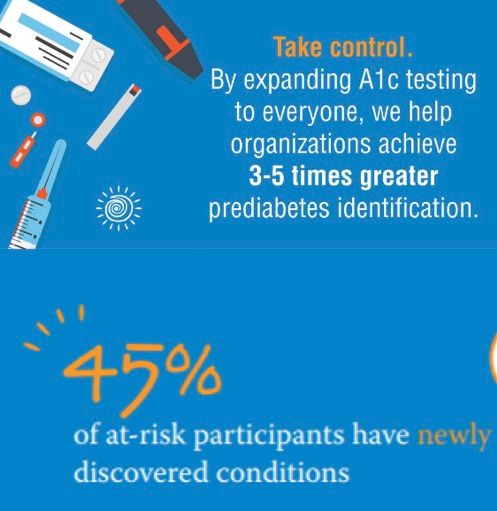
While there are many others, Interactive Health is the leading practitioner of hyperdiagnosis. Lacking (or, worse, having) an understanding of the math of false positives, it wants to test everyone in an organization, and then send 45% of employees to the doctor.
What Interactive Health fails to understand is the rate of false positives. To use a hypothetical example: a test that is 90% accurate for detecting a hidden disease that 1 in 1000 people have will produce a false positive rate of 99%. Here’s the arithmetic: 100 people will test positive—the 90% accurate test is also 10% inaccurate—but only 1 of those 100 will have the condition.
That’s why it costs $1 million dollars to prevent a heart attack, and that’s why Interactive Health keeps finding employees with “newly discovered conditions.”
Incorrect or Harmful Advice on Health Risk Assessments
Medical professionals give harmful or incorrect advice all the time. What makes health risk assessment (HRA) advice uniquely harmful is that:
- this advice is presented as fact;
- it is not offered in conjunction with a medical professional;
- it is not customized to the individual;
- often it is obviously or at least arguably wrong; and
- employees are given a “choice” of listening to the advice or losing money.
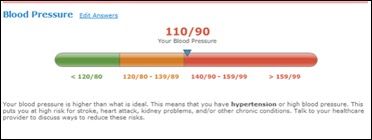
The 2 most widely used HRAs are Cerner and Optum. Here is an example of advice right off the front page of Cerner’s brochure:
This blood pressure is not “higher than what is ideal.” Quite the contrary, the revealed “pulse pressure” of 20 (110 minus 90) strongly indicates advanced heart failure. This employee should be rushed to the emergency room. (More than likely it was a false positive, because wellness vendors are not required to understand what they are doing. One vendor offers 5 days of training to franchisees, half what the Four Seasons gives housekeepers. The franchisees typically have a background in “municipality administration, finance or sales.)
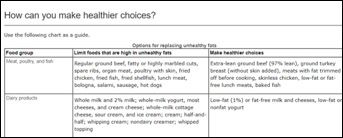
Cerner also is way out of date on dairy fat, which turns out to be protective against diabetes and possibly heart disease. Further, most nonfat yogurt contains added sugar, which Cerner overlooks under “make healthier choices.”
It’s also possible that these findings are wrong, but something this controversial should not be represented as factual in advice that employees are required to read in order to avoid financial penalties.
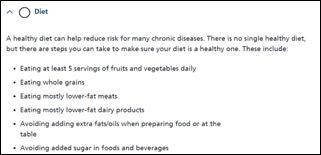
Optum also offers highly questionable dietary advice:
In addition to lowfat dairy, Optum also recommends avoiding extra fats and oils, despite that fact that olive oil is healthy enough to possibly be called a superfood. Even butter is being rehabilitated by some.

However, the major hazard in Optum’s HRA is the advice that people with chronic pain go get on their doctor’s pain program. This advice is specifically given in states such as Ohio, Indiana, and New Hampshire, where pain programs have historically been synonymous with opioids.
Summary
The purpose of this article and this series is to facilitate research for journalists, law makers, and regulators. (A companion article explores the ethics of unlicensed vendors in this unregulated field.) What is curiously unique about this series is that it is entirely based on material provided by the industry itself. This article doesn’t “challenge the data” the industry provides. Quite the contrary, it embraces the data. The data, as seen above, consists of a series of self-incriminating business practices, screenshots, and outcomes intended to raise the questions: “Why is there a law encouraging this corporate behavior? Should the forthcoming regulations continue to protect employers who do this to their employees?”
To a large degree, this series answers these questions, as well, not just with self-incriminating business practices, screenshots, and outcomes, but also backed with a $3 million reward, whose lack of claimants or even applicants speaks volumes about the industry’s faith in its own marketing claims.





